AI for C-suite: Empowering executives in the digital age (research + examples included)

Senior Content Marketing Manager
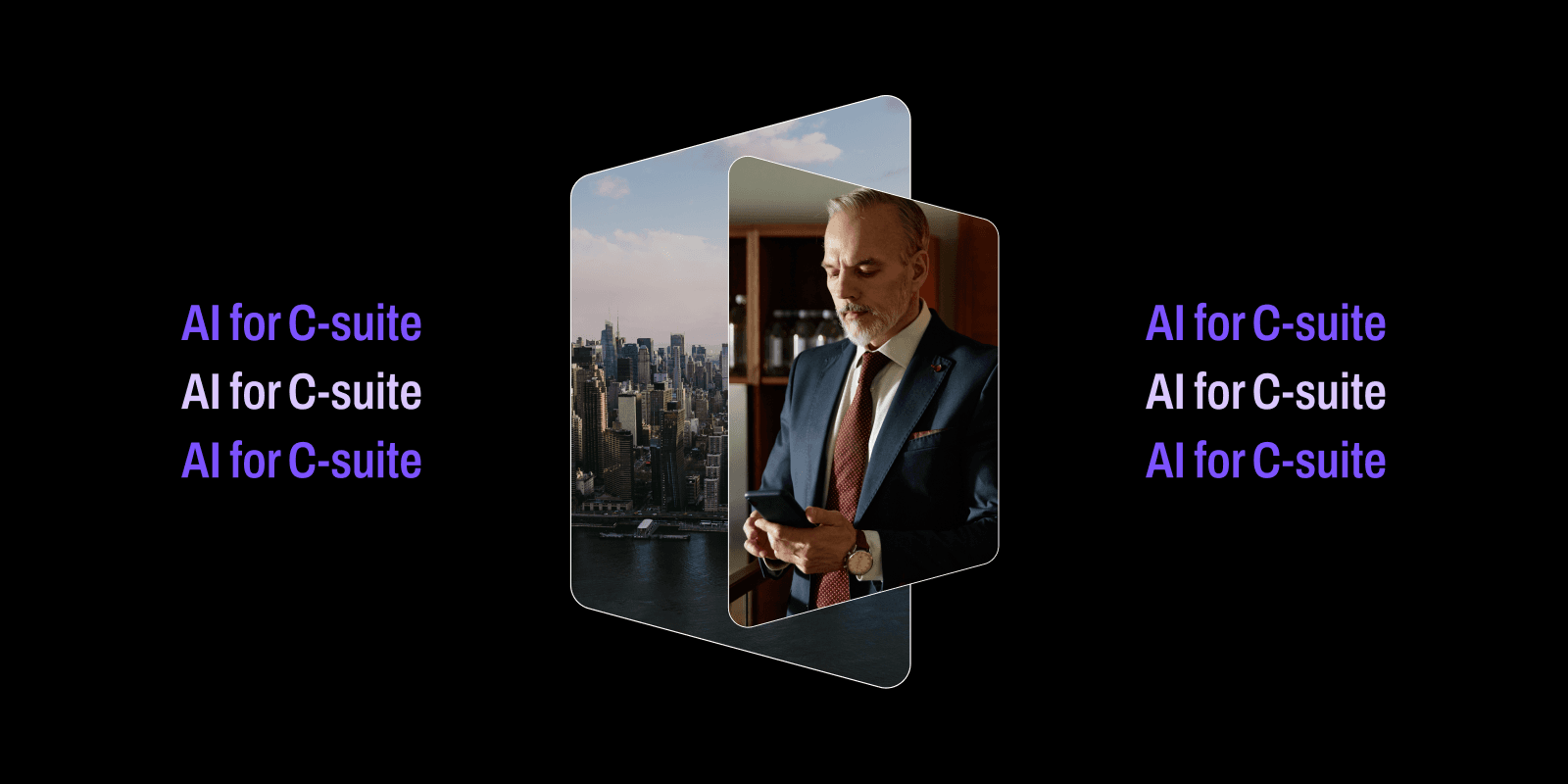
Tags
Share
With artificial intelligence (AI) emerging as a transformative technology, C-suite executives are seeking ways to harness its power. And it’s no wonder—according to research from MIT, ChatGPT is already impacting organizations across a variety of industries, raising productivity, work quality, and more.
Knowing the potential for transformation, some organizations are already hiring Chief Artificial Intelligence Officers (CAIOs). Until that happens in your organization, however, here are five ways the C-suite can harness AI to empower you and your employees, whether you’re a CRO, CIO, CMO, CCO or CFO.
AI for C-suite: Practical and proven use cases
AI for Chief Revenue Officers (CROs): 5 real-world examples
According to Gartner, 35% of CROs will establish a generative AI operations team in their go-to market (GTM) organization by 2025. In the meantime, CROs can leverage AI in various ways to optimize revenue generation strategies and drive growth, such as by:
1. Optimizing the sales process
AI-driven automation frees sales teams from time-consuming admin tasks. For example, by streamlining sales coaching, like by providing instantaneous call summaries:
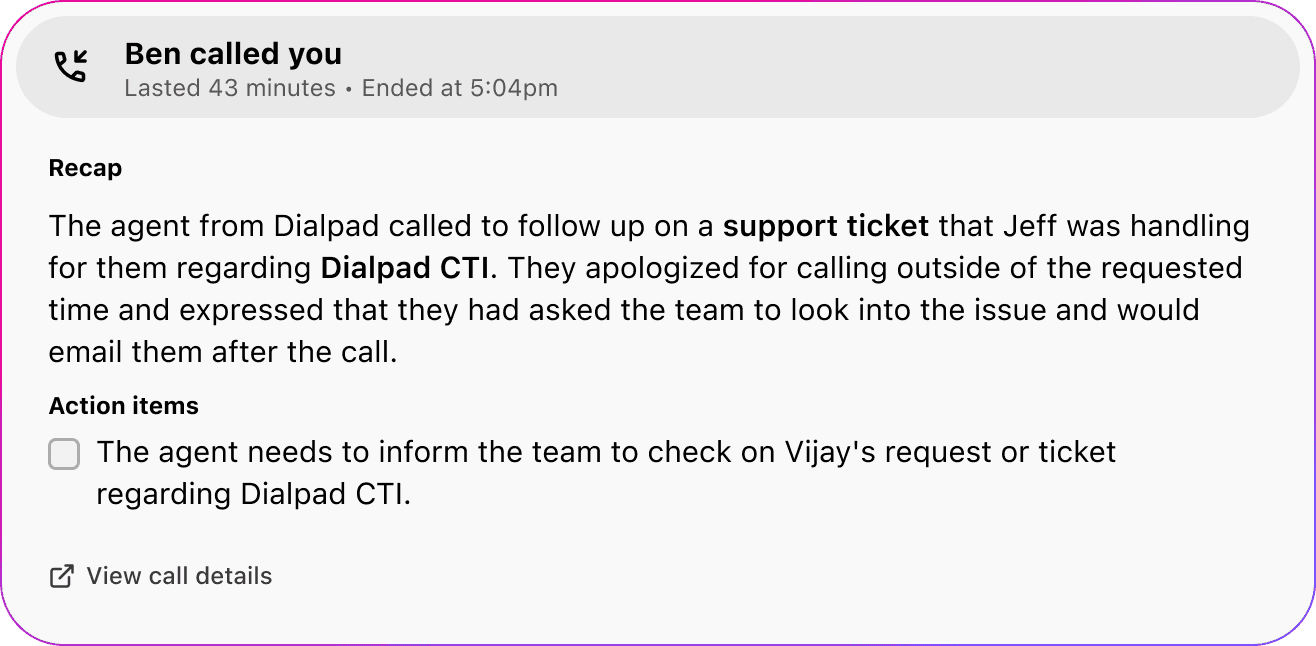
And by automating everyday sales activities, like by suggesting answers to questions on the fly, enabling better prospect and customer interactions:

2. Enabling sales
AI embedded in sales enablement tools empowers sales reps to work quickly and effectively. As an example, conversational AI can deliver real-time sales support, answer prospects’ questions, and provide product information. It can also help reps overcome objections more effectively in the moment.
3. Retaining customers
With AI-powered customer analytics, you can identify churn risk factors and establish proactive customer retention strategies aligned with customer behavior and preferences. Dialpad’s Ai CSAT, for example, automatically infers CSAT scores from 100% of your customer conversations—no surveys required:
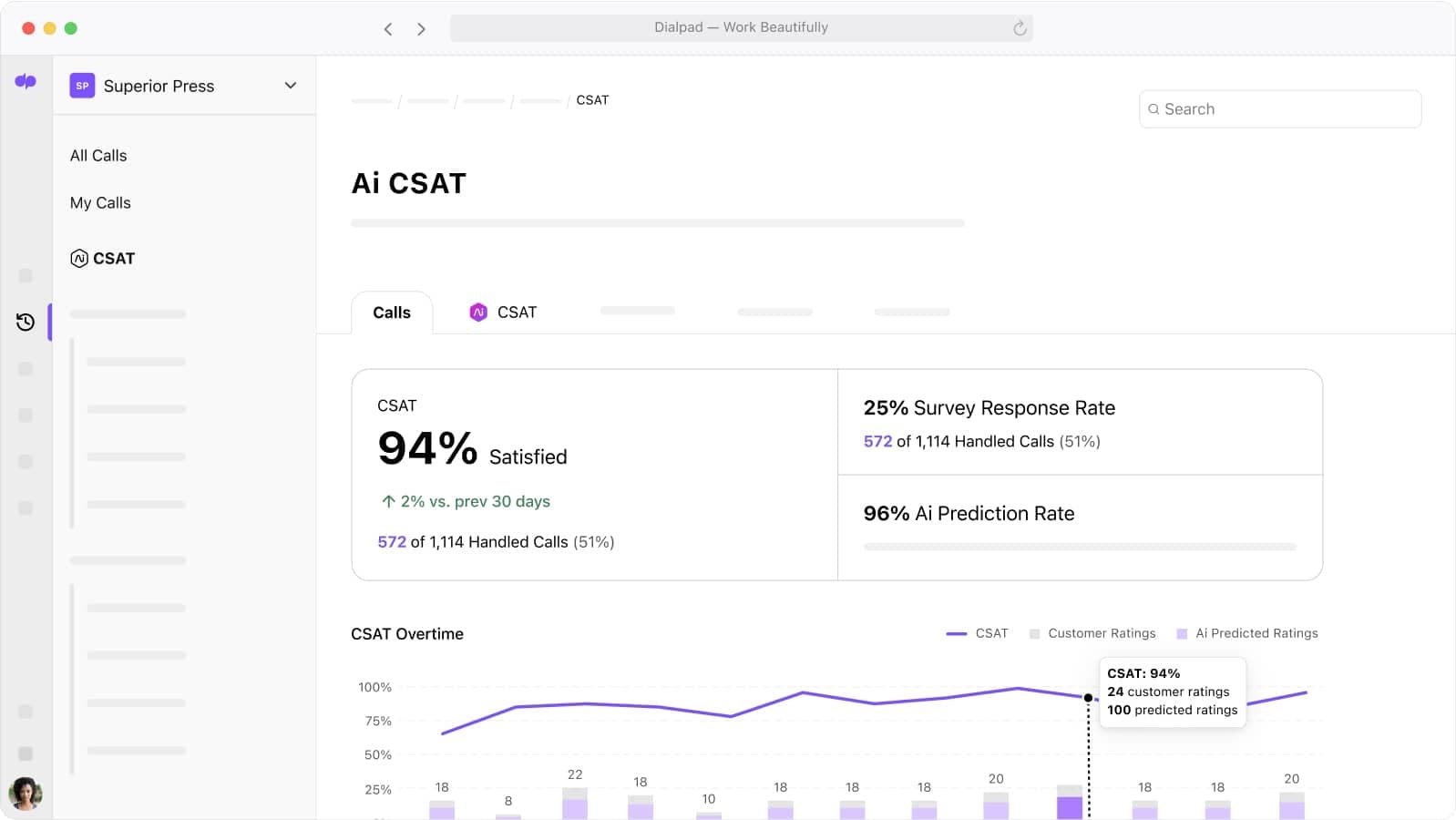
Combine this with data from your CRM system and you can easily identify promising cross-sell and up-sell opportunities.
4. Boosting sales performance
Calling upon AI-powered sales tools, you and your sales leaders gain insight into top performers and opportunities for improvement. With Dialpad’s Ai Coaching Hub, for example, you can get a birds-eye view of how your reps are doing with the leaderboard:
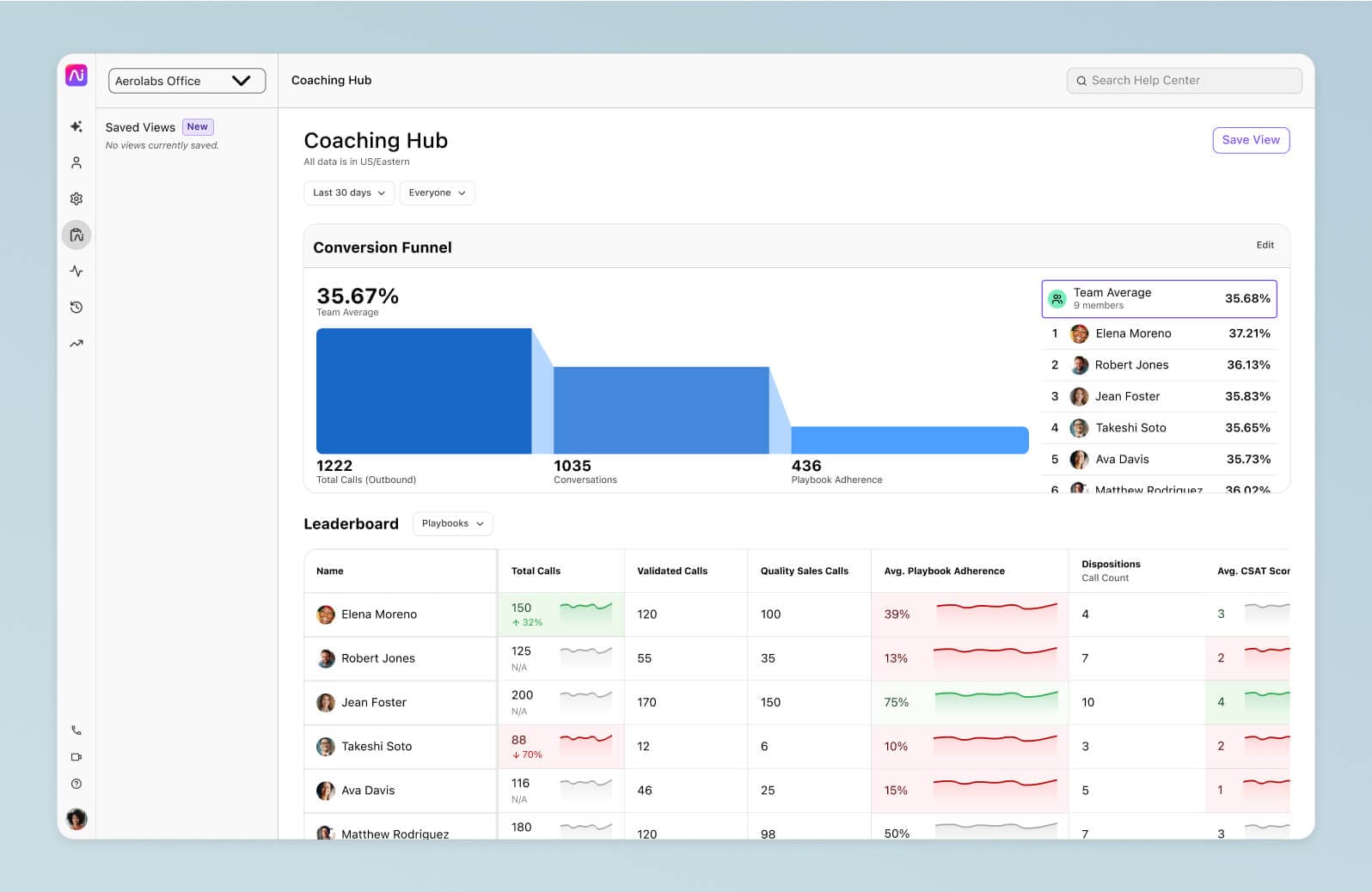
5. Improving forecasting
AI sales solutions can also help generate accurate forecasts. Knowing what results to expect, you and your managers can proactively plan to meet and beat the numbers.
FURTHER READING:
Learn more about AI for CROs in this blog post (written by an actual CRO).
AI for Chief Information Officers (CIOs): 5 real-world examples
According to an April 2023 pulse poll of 254 technology leaders by professional services firm EY, 90% of respondents are exploring AI platforms such as ChatGPT and Bing Chat. And 80% are planning to increase their investments in AI in the upcoming year.
With that in mind, here are five ways CIOs are already harnessing AI to drive digital transformation within their organizations:
1. Automatically categorizing incidents
Using AI-powered chatbots, CIOs can look across their ITSM infrastructure to identify patterns and trends across employee requests, which makes it easier to prioritize IT responses.
2. Intelligently assigning incoming requests
To best match IT requests with the right IT staff for resolution, CIOs are starting to use AI to automatically route tickets to the most appropriate person.
3. Guiding event resolution
Guided by AI-generated advice, IT service desk staff can more quickly find information and prior resolutions to related incidents. An AI tool can even walk team members through the process of opening an incident record:
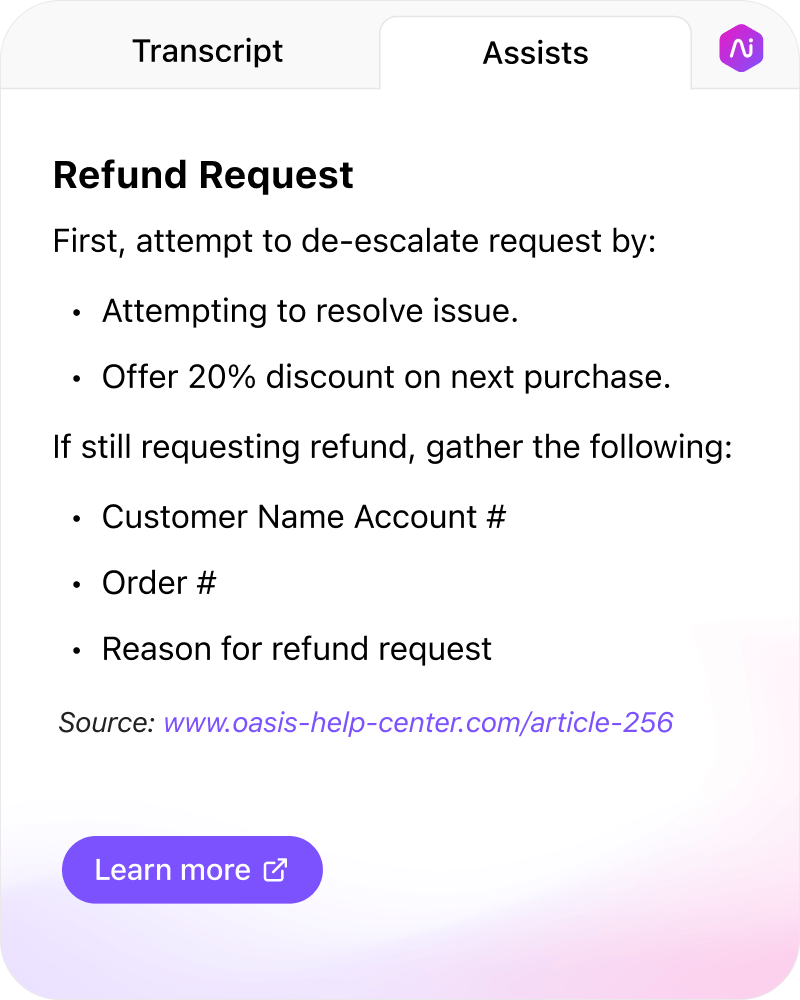
4. Enhancing customer service
AI-powered chatbots and virtual assistants can handle routine inquiries, deliver instant support, and help employees and customers access information and complete tasks. Natural language processing can even help chatbots answer common questions based on historical data and an IT knowledge base:
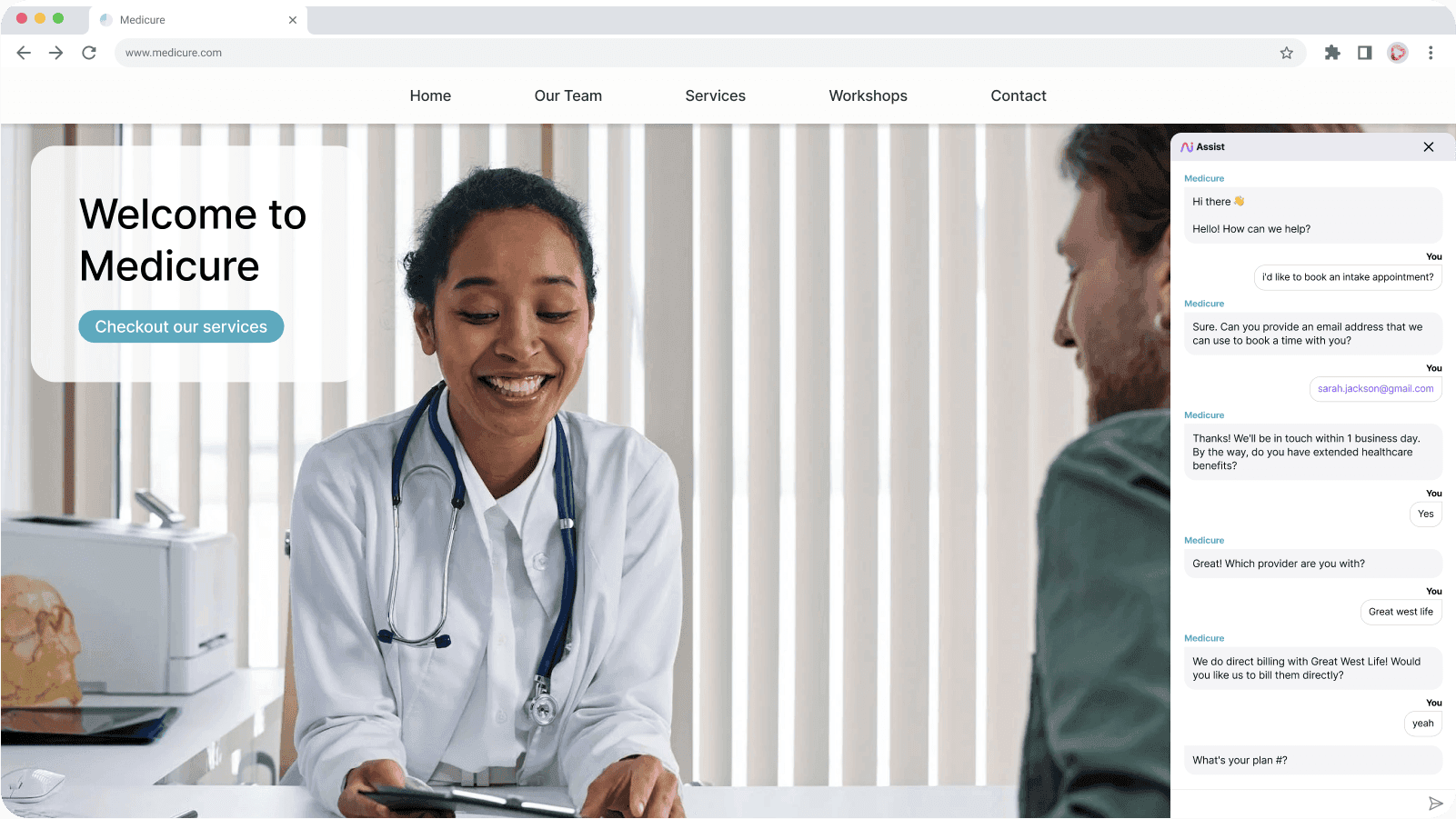
5. Assisting DevOps
With AI-powered chatbots, developers can automatically create a repository of data about infrastructure changes and successful incident resolutions. AI engines can then mine this data to help solve similar problems in the future. AI can also be used to automate code testing, identify development bottlenecks, and streamline software delivery.
FURTHER READING:
Learn more about AI for CIOs in this blog post (written by an actual CIO).
AI for Chief Marketing Officers (CMOs): 5 real-world examples
Marketing is proving to be one area of the business that quickly sees the impact of AI. In fact, most companies have already implemented or tested generative AI to address a wide range of marketing challenges, according to a BCG survey:
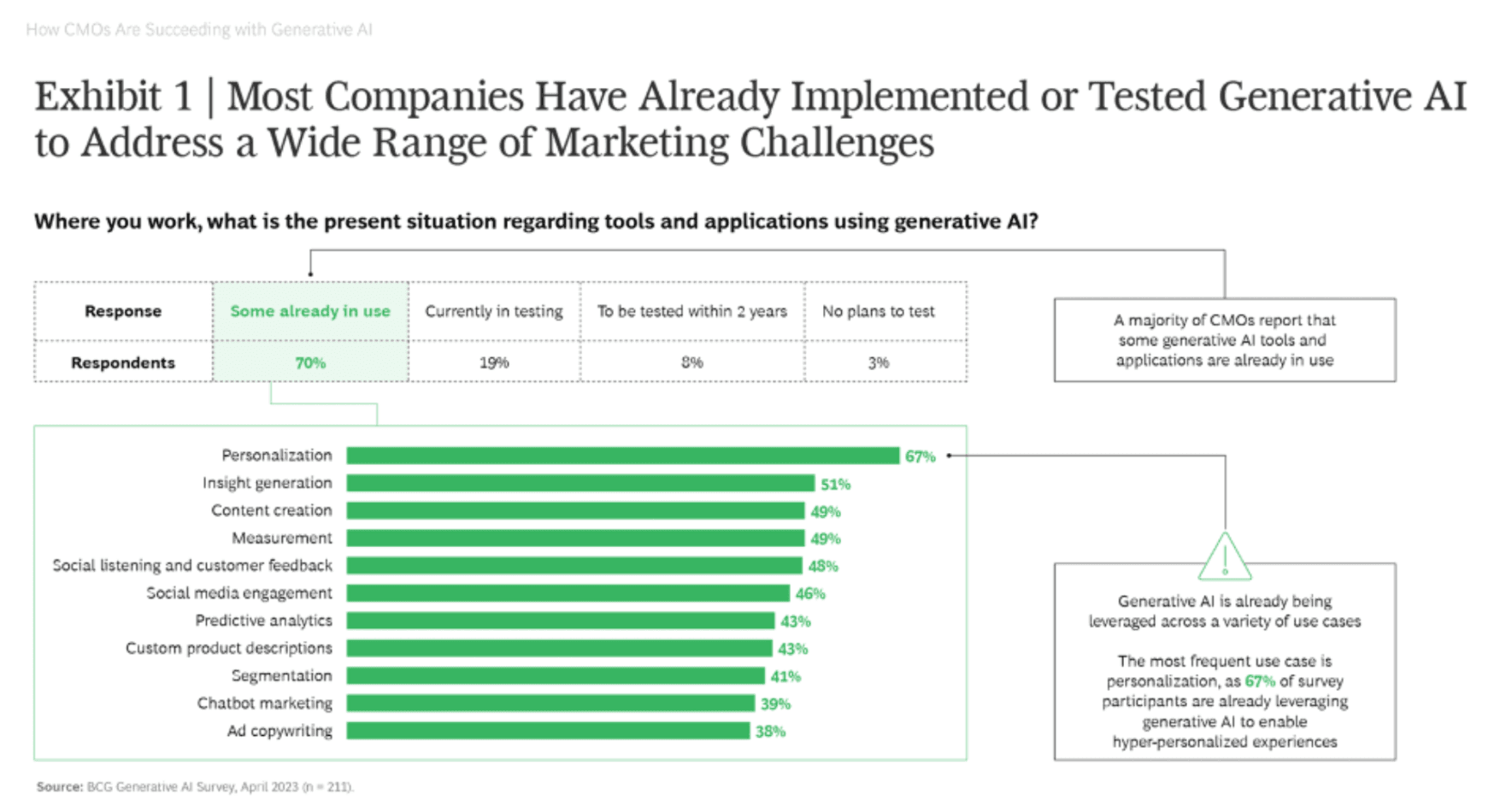
CMOs are leveraging AI and the insights it delivers to drive marketing strategies, improve customer engagement, and more. Here are five specific ways they are making the most of AI across the categories of Planning, Production, Personalization, Promotion, and Performance, per The 2022 State of Marketing AI Report:
1. Planning
Marketers can use AI to:
Help develop buyer personas based on needs, goals, intent, and behavior
Identify gaps and opportunities in existing online content
Optimize content by choosing the best keywords and topic clusters
For example, AI algorithms can process social media data, website interactions, and purchase history to create detailed profiles of different customer segments, helping marketers tailor their strategies accordingly.
AI can also perform keyword research and topic clustering to suggest relevant topics that align with current trends and customer interests, ensuring that content is optimized for search engines and resonates with the target audience.
2. Production
To create the best-performing content, CMOs are using AI to optimize website content for search engines, create data-driven content, and predict content performance before going live.
For example, AI-powered tools can suggest relevant keywords and optimize content structure to improve its visibility in search engine results, increasing organic traffic to the website. It can also analyze historical data on content performance, audience engagement, and conversion rates to predict how new content will perform before it goes live.
3. Personalization
To best engage and convert prospects and customers, marketing organizations use AI to recommend highly targeted content in real time; determine which offers will motivate people to take action; and deliver individualized experiences online and in apps.
For instance, some e-commerce platforms have built-in AI that can suggest product recommendations, offers, and promotions based on a user's browsing history, purchase behavior, and demographic information. By personalizing offers based on customer preferences, marketers can significantly improve conversion rates.
4. Promotion
Marketers are successfully harnessing AI to guide audience targeting based on behavior and lookalike analysis; predict winning creative (such as digital ads, landing pages, CTAs) before launch; and deliver personalized content experiences across channels.
For example, AI can analyze past campaign performance, audience preferences, and creative elements to predict which digital ads, landing pages, or CTAs are likely to be most effective. This enables marketers to fine-tune their creatives before launch, increasing the chances of a successful campaign.
5. Performance
To determine and improve performance, CMOs can use AI to measure ROI by channel, campaign, and overall; identify top-performing content and campaigns; and forecast campaign results (using predictive analytics).
AI for Chief Customer Officers (CCOs): 5 real-world examples
CCOs can leverage AI to optimize customer experiences, improve satisfaction, and drive brand loyalty. Here are five examples of how they can use AI in a contact center:
1. Real-time agent coaching
Empowered with insights through voice transcription and sentiment analysis, call center supervisors can quickly identify calls dipping into negative sentiment territory, review the running transcript for more context, and determine how to best help the agent:
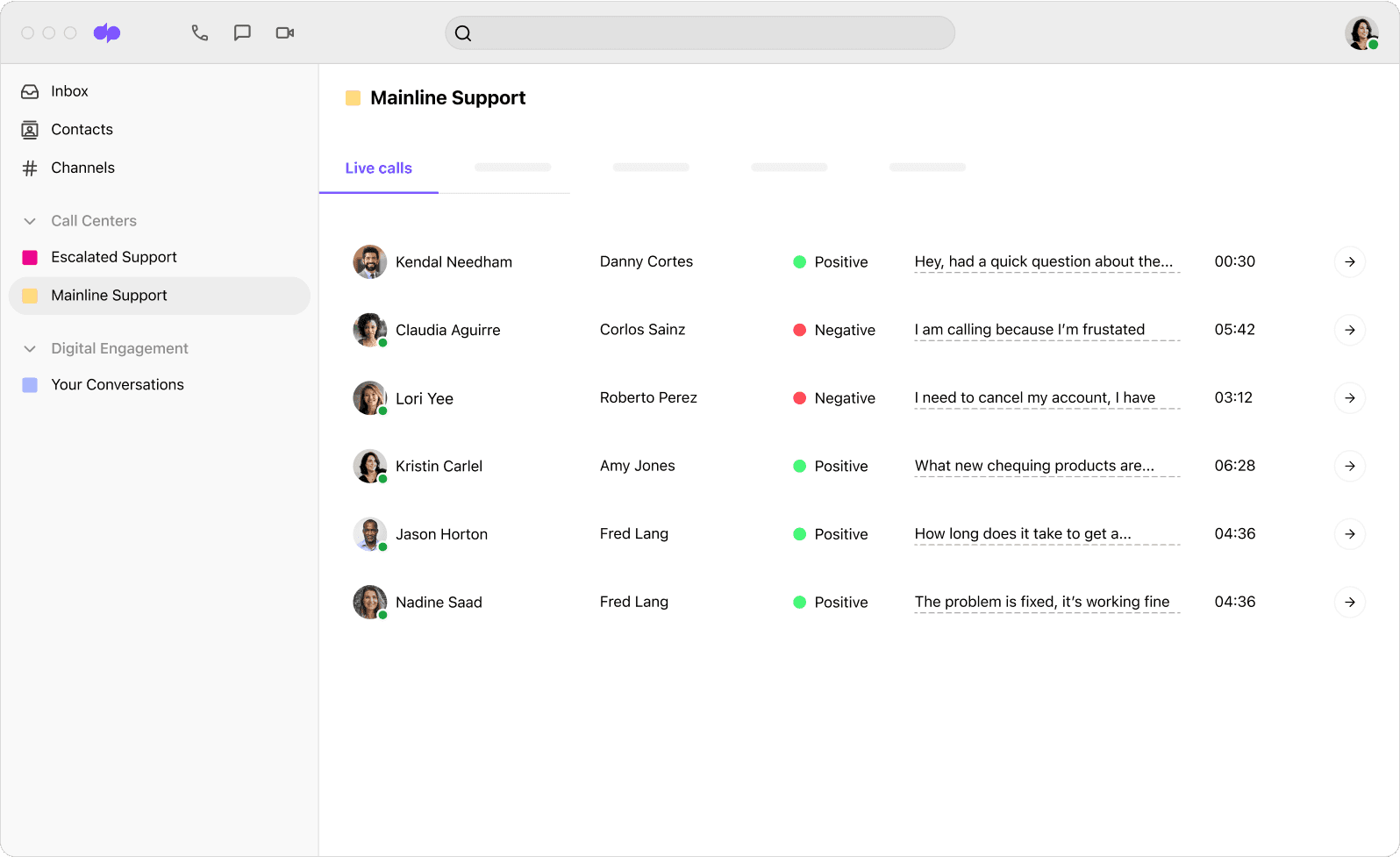
2. Real-time agent assists
Contact center AI can automatically present helpful information and the right answers—such as those pulled from knowledge bases and past conversations—to agents as they’re talking to a customer. Contact center supervisors don’t need to coach in those cases, and agents can more quickly and efficiently answer questions and solve problems.
3. Post-call coaching
Once a call has ended, AI can review the transcripts and suggest a quality assurance (QA) score to help with call center QA:
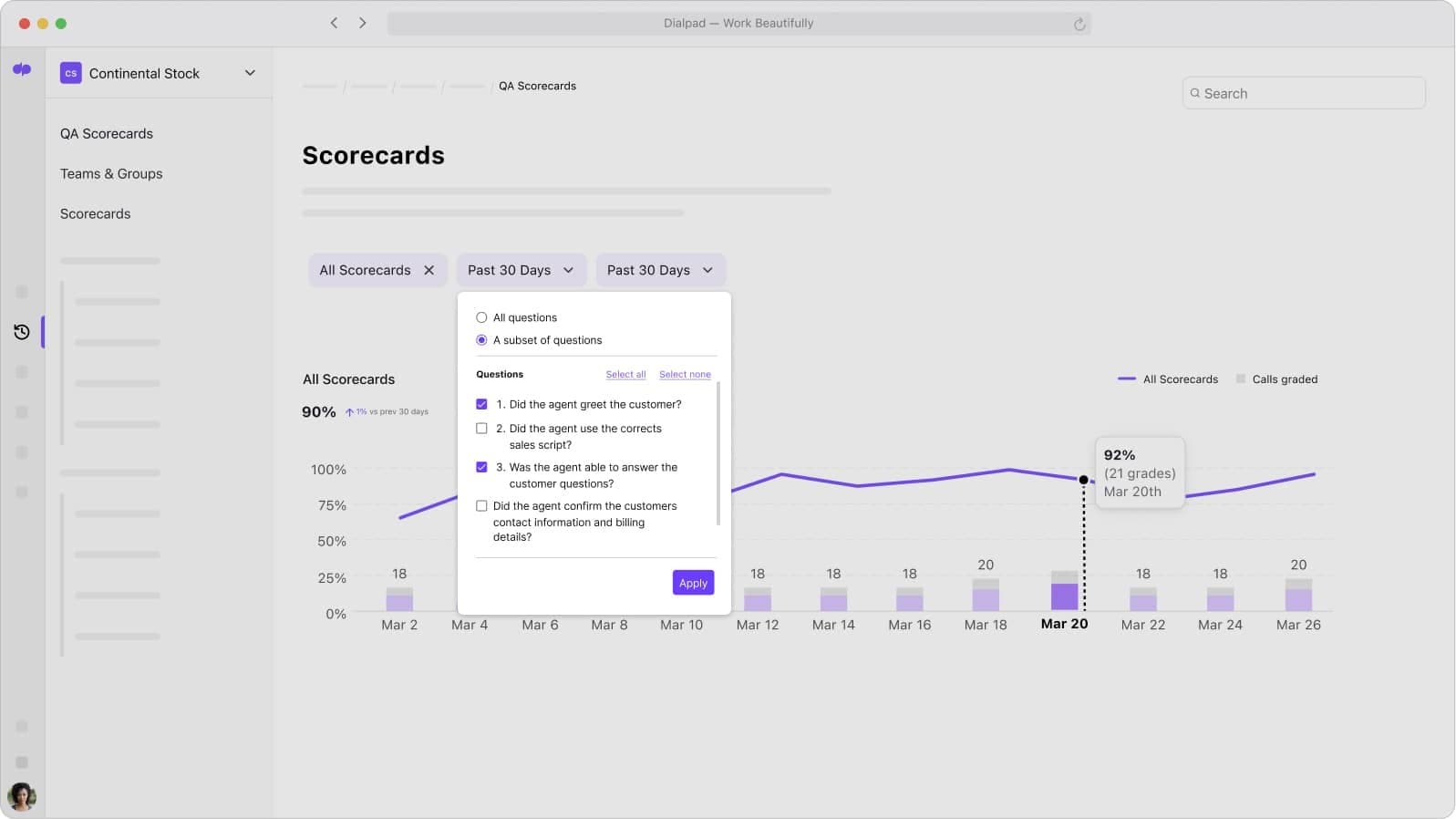
4. Call deflection
Using conversational AI or a support chatbot to enable self-service options on your website and digital channels, CCOs empower customers to solve their own problems. You free your team of agents while more quickly resolving cases.
5. More productive calls and follow-ups
By instantly providing agents and supervisors a brief synopsis or call summary for every customer conversation, AI eliminates the need to take notes, or copy and paste between apps or browser windows. And by integrating with the rest of your tools—like your CRM—you can access all of your customer information in one, centralized location:
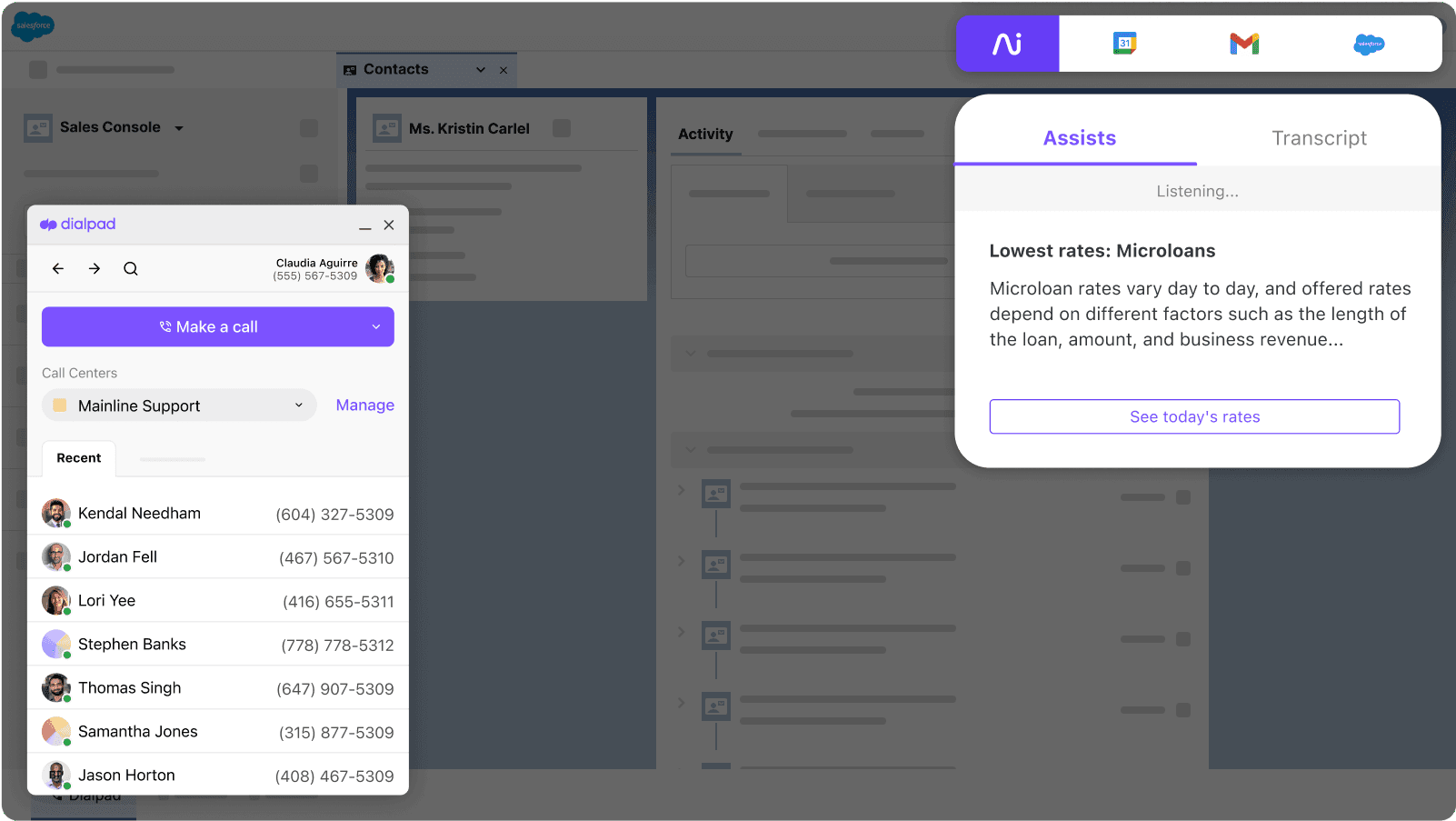
FURTHER READING:
Learn more about AI for CCOs in this blog post (written by an actual CCO).
AI for Chief Financial Officers (CFOs): 5 real-world examples
According to Deloitte, CFOs should have artificial intelligence on their minds. As the strategic consulting firm says, by unleashing AI’s full capabilities in finance and throughout the business, companies can turn AI into a driver of differentiation that increases productivity and boosts growth.
In line with this thinking, Gartner identified five ways CFOs can and leverage AI to streamline financial operations, improve decision-making, and more:
1. Forecast demand and revenue
This applies to internal and external data sources. AI models can predict demand and associated revenue across numerous dimensions, including business unit, product line, SKU, customer type and geography.
2. Detect anomalies and errors
AI can highlight erroneous transactions or balances—or ones that potentially violate accounting principles or policies.
3. Support decisions
When weighing options, CFOs can call upon AI-powered predictive analytics to predict the outcomes of various decisions.
4. Assist with POC revenue forecasting and accounting
AI can forecast percentage-of-completion metrics (for example, hours, cost, units, and weight) to predict POC revenue and the total effort needed to complete these.
5. Forecast and enable cash collection
Calling upon AI, finance teams can forecast when customers will pay invoices, enabling them to trigger proactive collection efforts before payments are past due. Hand in hand with this, collections staff can focus on at-risk accounts.
Embrace AI for next-level leadership
No longer just a futuristic pipe dream, AI is already empowering leaders across the C-suite to drive better performance and outcomes. In fact, it’s quite likely that the C-suite will soon be expected to harness AI to deliver more value and amplify their impact.
Think of AI as a technology that augments your experience and instinct, enabling you to confirm or dispel hunches and make the most strategic decisions possible. By embracing AI for better productivity and decision-making, C-suite executives can harness the technology for true business and leadership differentiation.
See why the C-suite loves Dialpad Ai!
From sentiment analysis to real-time sales coaching, Dialpad provides a range of features designed to empower C-suite executives. Book a demo to see how, or take a self-guided interactive tour of the app on your own!
